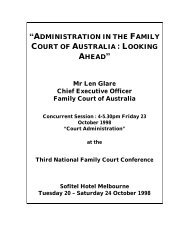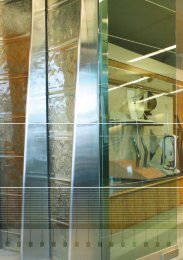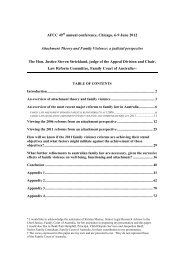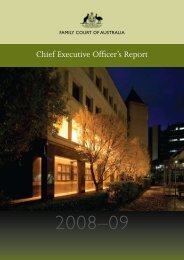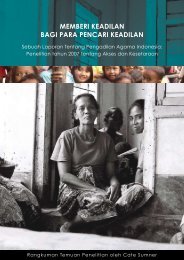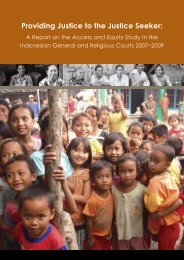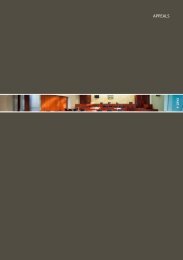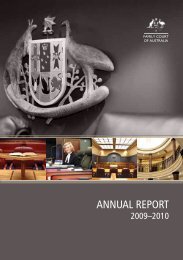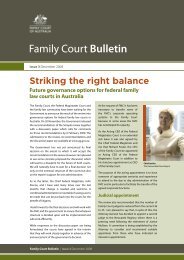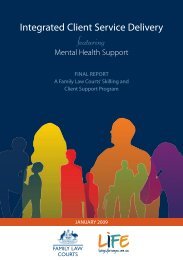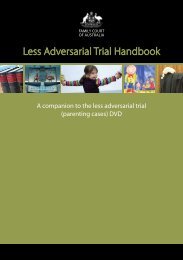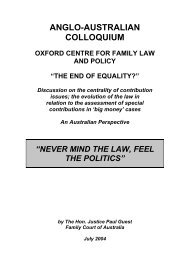Open PDF - Self represented Litigants a challenge - Size 786 KB
Open PDF - Self represented Litigants a challenge - Size 786 KB
Open PDF - Self represented Litigants a challenge - Size 786 KB
Create successful ePaper yourself
Turn your PDF publications into a flip-book with our unique Google optimized e-Paper software.
<strong>Self</strong>-<strong>represented</strong> <strong>Litigants</strong> ~ A Challenge: PROJECT REPORT<br />
18 Kathy Mack emphasised the importance of the process itself pointing out<br />
that there were a number of studies which reflected the fact that there was<br />
a much greater acceptance of an unfavourable outcome for a litigant if he<br />
or she felt that the process has been fair, rather than (perhaps curiously) a<br />
good outcome from what was regarded as a bad process. A good example<br />
of this during the workshop was the frustration that litigants feel in a process<br />
that does not allow them to speak (usually when <strong>represented</strong>). This broad<br />
philosophy both overlaid and pervaded the considerations of the weekend.<br />
The First Road – following the court assisted litigation route<br />
19 This proposal recognised the difficulties of self-representing litigants and<br />
indeed of many <strong>represented</strong> litigants in coping with the existing system.<br />
The level playing field is not there when there is an imbalance of resources<br />
or skill of representation. Court time (in the sense of judicial time) is not<br />
maximised where the parties with competing interests present only the<br />
evidence supporting his or her position. Nor is the decision maker ensured<br />
of access to the best evidence – vital information may be left out. Without<br />
some assistance the intervention of a Judge in trials may operate unfairly to<br />
the parties. However, all of the self-representing litigants regarded the<br />
intervention of the Judge in the proceedings they had been involved with,<br />
or had experience with, as being important to a fair process.<br />
The objects of the first road<br />
20 The proposal has three objects. The first is to put a self-<strong>represented</strong> litigant,<br />
as nearly as possible, on an equal footing, in the conduct of a Family Court<br />
matter, with his or her opponent whether or not that opponent is also self<strong>represented</strong>.<br />
The second is to reduce the time wasted in litigation where<br />
one or both parties is or are self-<strong>represented</strong>, because they or one of them<br />
does not understand what evidence is relevant and what irrelevant and<br />
what arguments should be advanced on that evidence. And the third is to<br />
reduce adversarial bias.<br />
21 As to the first of these, our present system works fairly between opposing<br />
parties only when they are of equal bargaining strength, a situation which<br />
rarely exists in fact. For example, the richer litigant can always employ the<br />
better lawyer, and more lawyers, and can expend more time and money<br />
generally on the preparation of his or her case. And the dominant partner<br />
in the marriage would ordinarily be at an advantage in both negotiation and<br />
more confrontational litigation.<br />
59



